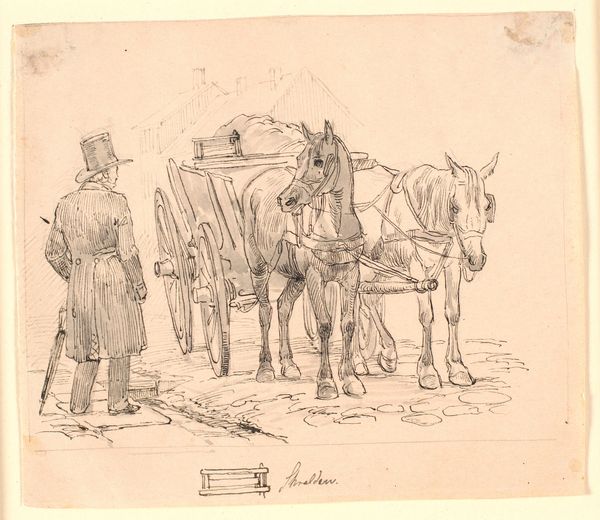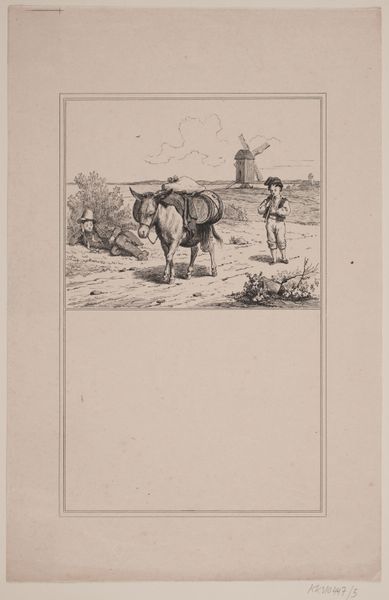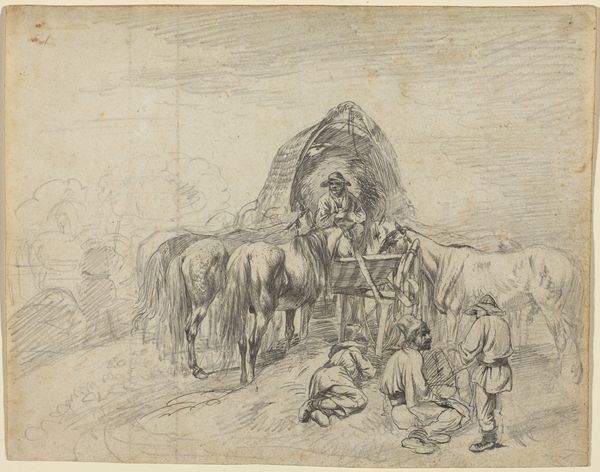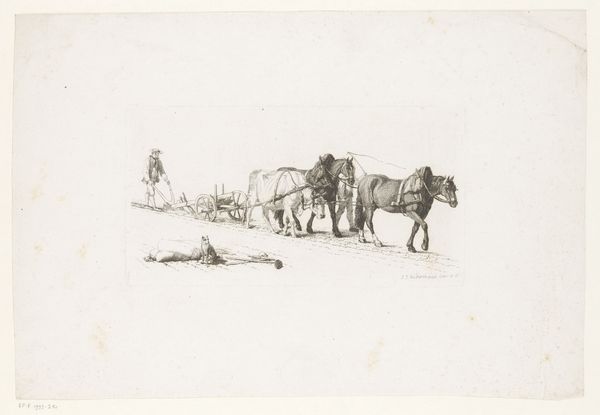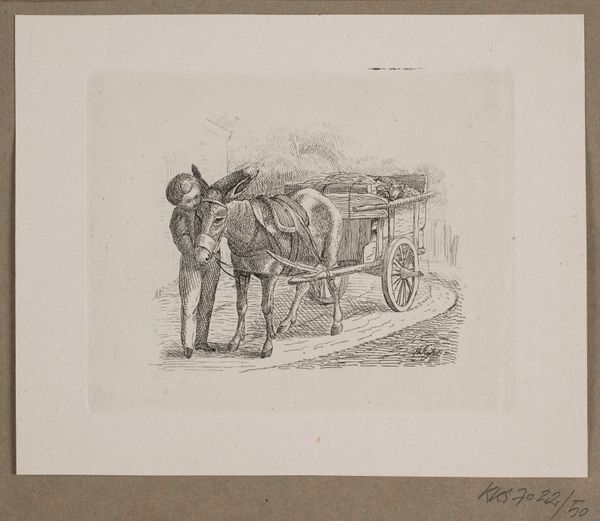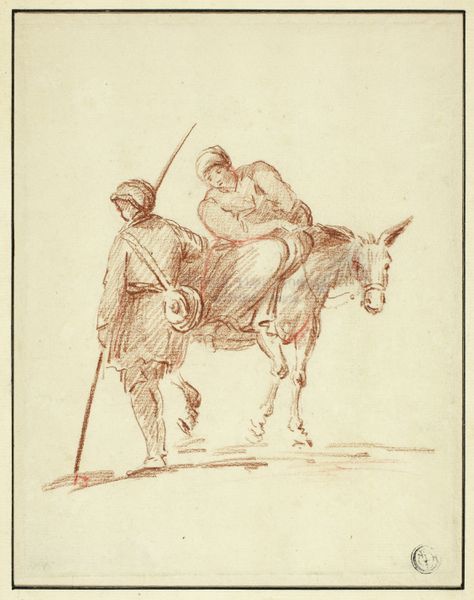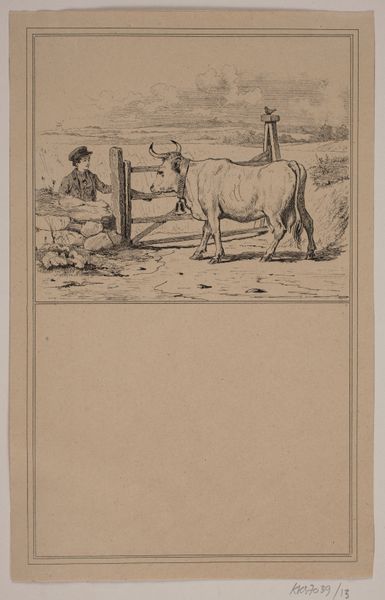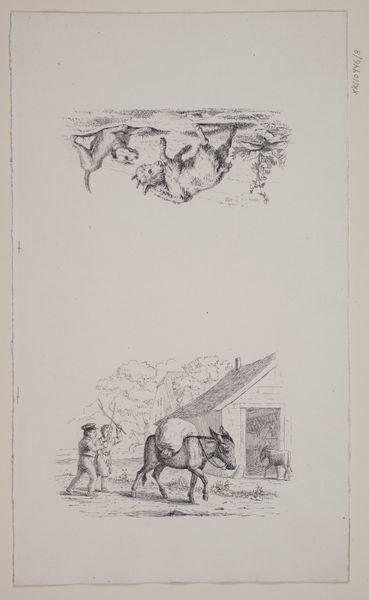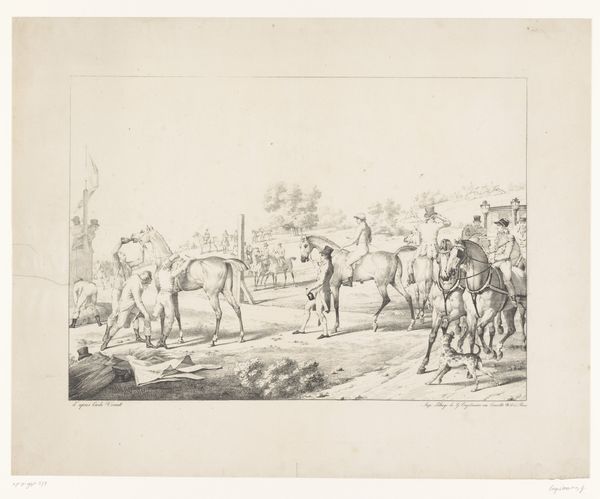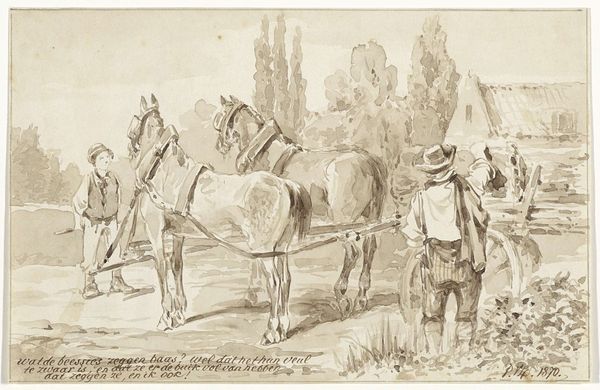
drawing, lithograph, print, pencil
#
drawing
#
lithograph
# print
#
romanticism
#
pencil
#
cityscape
#
genre-painting
Dimensions: 259 mm (height) x 173 mm (width) (bladmaal)
Curator: This lithograph before us, rendered in pencil, is entitled "Skraldemandshesten," or "The Garbage Man's Horse." It was created around 1845 by Adolph Kittendorff and resides here at the SMK. It has a rather gloomy aspect, don't you think? Editor: Absolutely. It's tinged with a certain melancholy, though the delicate linework of the romanticist style somewhat tempers it. The overcast palette contributes to a mood that evokes 19th century urban life. Curator: What I find compelling is Kittendorff's decision to foreground the working animals, the horses. It offers a window into the socioeconomic dynamics of the time. You see the well-to-do man with his walking stick contrasted to the literal engine of refuse collection. Editor: Precisely. And the very act of depicting a garbage cart hints at the growing pains of industrializing cities. The accumulation of waste became a public concern—visible, tangible. I wonder what the garbage was primarily made of, the imagery tells me it's not plastic. Curator: No plastic yet. Predominantly ash, food waste, perhaps some textile remnants. This print is not simply an image but a document of the changing social landscape. The cityscape in the background acts as this silent witness of human stories. Editor: I also think the placement of the horses invites symbolic reading. They aren’t romanticized steeds of war; they are beasts of burden. Kittendorff challenges notions of idealized heroism, revealing something fundamental about everyday existence. Curator: Perhaps even raising questions about man’s relationship to the animal world in an urban context, how beasts served human goals? The weight of labor shows even in their drooping stance. The muted colors surely are the reflection of it. Editor: Indeed. I appreciate how this modest print provokes contemplation about work, class, and the overlooked aspects of 19th-century Copenhagen society. It really captures a slice of history you can really think through. Curator: And how skillfully Kittendorff uses subtle detail and suggestion to speak volumes. Its value lies in capturing that overlooked moment in time, now part of a longer urban history. Editor: A history constantly being layered, shifting perspectives, inviting viewers like us to engage in ongoing interpretation and fresh discovery. I certainly look at our trash a little different now.
Comments
No comments
Be the first to comment and join the conversation on the ultimate creative platform.
